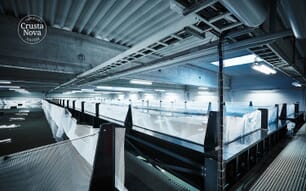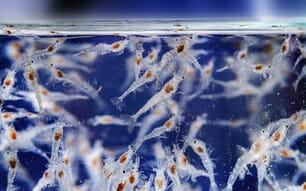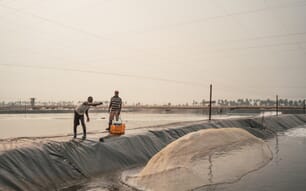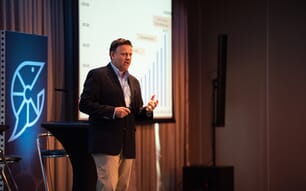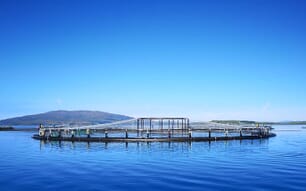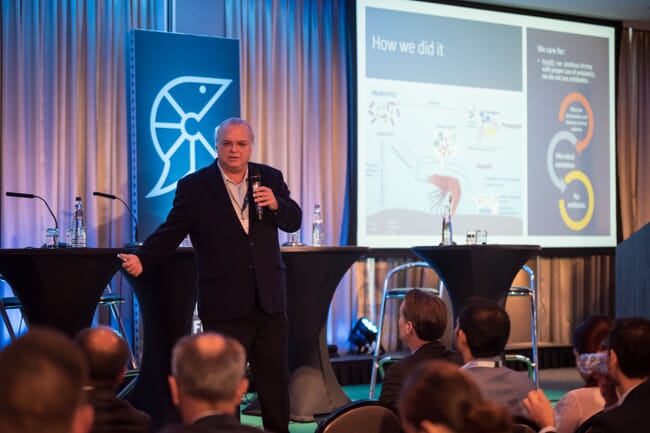
Under Laniado's leadership, Songa now produces 8,000 tonnes of shrimp a year across 21,000 hectares of ponds © Pierre Banoori Photography
This was one of the central themes of a presentation on Ecuador’s shrimp farming philosophy by one of the industry’s pioneers, Rodrigo Laniado. After the presentation Rabobank’s Gorjan Nikolik quipped that the country had created “business class for shrimp”.
Laniado is CEO of Songa, the original shrimp farming company in Latin America, which his father founded in 1967. Since joining the company in 1984, Laniado Jnr has helped to grow the business and it now produces 8,000 tonnes of shrimp a year across 21,000 hectares of ponds.
According to Laniado, his father’s abiding philosophy – one that Laniado Jnr has tried to continue – is that farms “need to resemble the ocean, as that’s what these animals need”.
“That’s what Ecuador has done, but it’s taken us over 40 years to learn that lesson,” Laniado added.
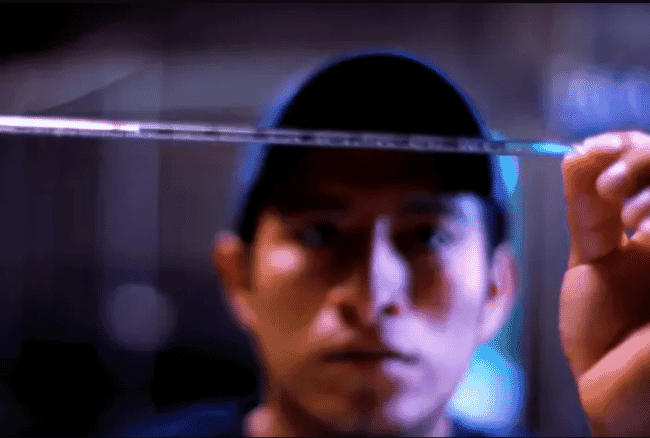
Songa has invested in genetics and breeding to become resilient in the face of disease challenges © Songa
While Ecuador’s shrimp sector has never been more productive, Laniado recalled the whitespot epidemic in 2000, which led to two thirds of production collapsing. It took the best part of a decade and improvements in genetics, in particular, for the industry to become profitable again.
“When whitespot hit us it wiped us out, so we had to look at a more sophisticated system to provide us with seed – we had people from the US, Europe and Asia to come and help us develop the hatchery industry in Ecuador and of course each country brought their own magic and their own specifications,” he recalled.
Meanwhile the key development in the following decade was, according to Laniado, the improvement in feeds – thanks in part to investment from the likes of Skretting, BioMar and Cargill, who all set up feed mills in the 2010s.
“This created improvements and efficiency. Basically it was the improvement in the feed and competition, before that it was poor quality and very low competition. We know that from macroeconomics you need competition to improve and that’s exactly what happened,” Laniado explained.
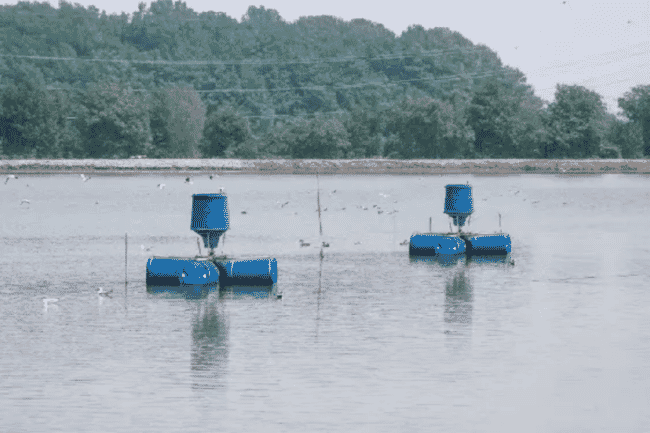
Ecuador's shrimp sector got a boost from investments in nutrition and farm tech like automatic feeders © Songa
“Then we had the magic of the automatic feeders,” he added, noting that they were “probably the best invented thing in aquaculture today”.
The Songa experience
Improvements in genetics, health management and feed combined to triple the productivity of Songa’s ponds – from stocking densities of 8 wild-caught PLs per m2 in 1967, to stocking 25 hatchery-produced shrimp per m2 today, equating to harvests of 40 kg per hectare per day.
“In 2010 harvesting 20 kg per hectare per day was a dream, like going to Disneyland, but we’re now at 40,” he explained.
How far this could increase remains to be seen – while Laniado suspects that 50 kg per ha per day as being conceivable, he admits he can’t be certain.
“One of the challenges we have in our industry is that we need to find the sustainable point for efficient production per unit area in Ecuador,” he explained.
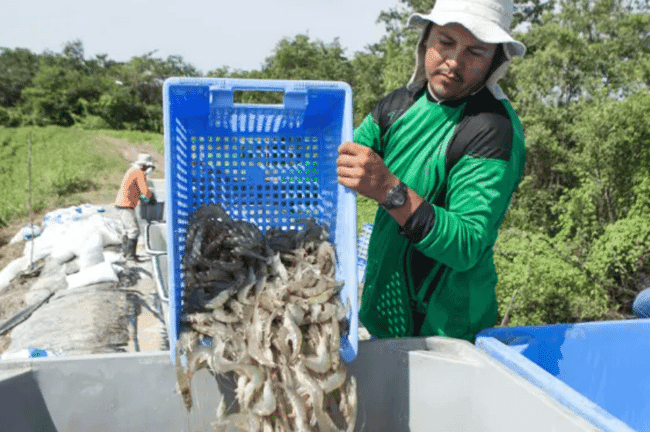
Songa can harvest 40 kg of shrimp per hectare each day © Songa
The Songa method
Laniado noted that Songa has being producing shrimp continuously for 45 years – no mean feat – and listed some of the most important developments to enable this.
“To produce in a healthy environment, in a healthy manner, you need to have probiotics, you need to have biosecurity, you need to have disease control, you need to have sanitation, you need to have no antibiotics,” he recommended.
While Songa did use antibiotics for a while, they found that stopping their use improved their shrimp performance and he was pleased to see their use being banned in the late 1990s.
According to Laniado in the last 10 years these factors combined to improve feed conversion ratios from 2.5 to 1.6, while tripling productivity. And he pointed out that there had been no shrimp epidemics in Ecuador since 2010, that survival rates were now close to 75 percent and shrimp growth rates were averaging nearly 2.5 g per week and might even reach 4 g per week in the future.
Meanwhile, on the environmental side, Songa has been managing, not destroying, mangroves and wetlands.
“We need to have harmony in the pond, we need to have a system where the soil, the sediment and the water are treated as one unit, not as individual units. The shrimp is living there, the shrimp is eating there, and if you want to produce a healthy shrimp and you want to have a shrimp that tastes good you must have that,” Laniado stressed.
Future developments
Looking ahead, Laniado pointed to the need to improve training programmes as the sector becomes more technical. He also advocates ensuring products are fully traceable, in line with increasingly high consumer expectations.
He also suggested the potential of using liquid feeds, rather than pellets, for grow-outs as well as post-larvae. And he noted the need to pay more attention to reducing carbon emissions, the possibilities of becoming more circular and – in particular – the need to keep on top of pathogen control.

Songa is working towards finding the optimum sustainable stocking density for its farm operations © Pierre Banoori Photography
“The only risk the industry has, in my opinion, is the risk of new pathogens,” he argued. But he added that the genetic programmes developed since 2010 had greatly reduced this risk. “We used to have epidemics every 5-8 years but we haven’t had one since 2010,” Laniado added.
As a result he is cautious about increasing stocking densities too much, although suggested that it might be possible, without exceeding the carry capacity of their ponds.
“We need to find in Ecuador what is our optimum stocking level. I don’t know it today, I don’t even know it on my farms – it thought 3 tonnes [per ha] was OK, now we’re at 6 tonnes and we’re still OK, and all the environmental, sustainable parameters are pretty much the same. We changed a few things in the management, but basically things are balanced and happy,” he noted.
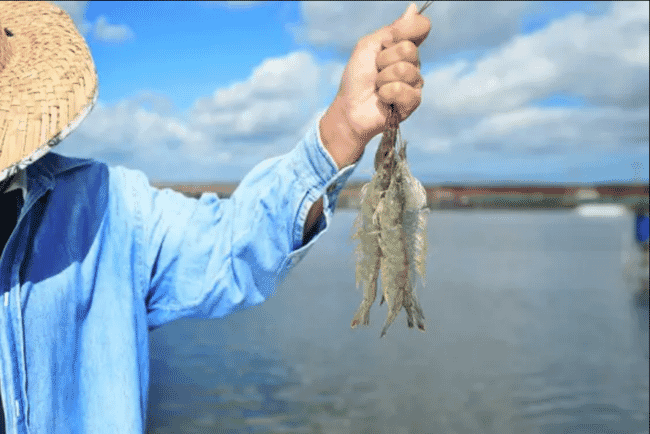
© Songa
Investment opportunities
Laniado’s last point related to where investment is most needed to grow the sector.
“Ecuador is a country where the areas for shrimp farming are fully developed. It’s a mature industry… there are no places to go and build new farms, but there is another way to capitalise investment in Ecuador,” he reflected.
“Over 90 percent of the companies are privately owned and over 50 percent of the farms and medium and small sized farms. It would only take a little bit of effort to out a management fund or investment fund together to try to capitalise that and create a new cluster for shrimp processing,” he observed.
As Ecuador’s economy is pegged to the dollar the risk, he added, was minimal, while new tax breaks are also available. This combination could encourage the investment needed to ensure that Ecuador’s shrimp sector could continue to fulfil its potential to feed the growing global population.
“To conclude, we need to continue to innovate, to achieve higher standards of sustainable production to be able to provide healthy and cost-efficient protein, to become one of the leading proteins to feed the world,” Laniado signed off.

